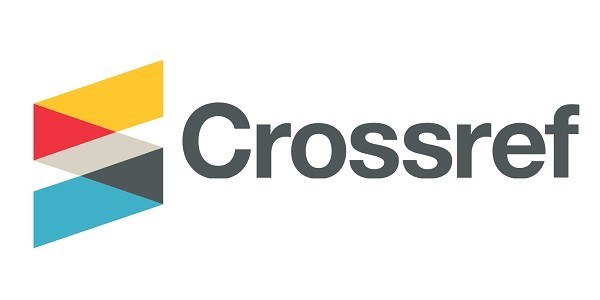Interrogative Sentences In Torajanese And English
A Contrastive Study
DOI:
https://doi.org/10.56326/jlle.v2i1.1450Keywords:
Interrogative Sentence, English Language, Torajanese, Contrastive AnalysisAbstract
This study aims to identify the forms of interrogative sentences in Torajanese and English structurally. This research is a descriptive qualitative research with the sample of native speakers of Torajanese in Pangala’ Village, North Toraja Regency. The method used in this research is contrastive method proposed by Tarigan. Then, for analyzed the types and forms of interrogative sentence the writer used the theory proposed by Quirk. The results of this research indicated that there were dominant differences in terms of sentence structure between Torajanese and English. The first types is Yes/No question, there are 8 forms of Interrogative sentences in Torajanese. Then, for the second types there are 7 forms of Wh-question. In the third types namely Alternative question there are 3 forms. Moreover, the differences from both languages were in placing the question word, in English it always begins with an Auxiliary verb or To Be and Wh-word. While, in Torajanese it was “Raka” which was equal to auxiliary verb, In Torajanese, it did not always begin in front of the sentence, but begins in the middle, and at the end of the sentence.
References
Ardiansyah, A., Maca, Sudirman., & Madjid, Syahriah. (2021). Makassarese and English Affirmative Sentences Pattern: A Linguistic Contrastive Study. Journal of Linguistics, Literature& Education,1(1), 01-20
Azar, Betty Schrampfer. (2002). Understanding and Using English Grammar. International Edition. Vice president, director of publishing: Allen Ascher
Carnie, Andrew. (2006). Syntax A Generative Introduction. Australia: Blackwell Publishing
Ditty, Denny Frandky. (2013). Kata Tanya Dalam Kalimat Tanya Bahasa Inggris dan Bahasa Wayoli: Suatu Analisis Kontrastif. Jurnal Elektronik Fakultas Sastra Universitas Sam Ratulangi, 1 (3), 01-20
Izzah & Hadi. (2018). Pembelajaran Introduction to Linguistics Melalui Vlog. Indonesia: Universitas Muhammadiyah Jakarta,1 (1), 191-198
Lengkoan, Vyona Eunike. (2015). Kalimat Tanya Dalam Bahasa Inggris dan Bahasa Sangir. Jurnal Elektronik Fakultas Sastra Universitas Sam Ratulangi, 4 (3), 01-15
Meyer, Charles F. (2009). Introducing English Linguistics. New York: Cambridge University Press.
Nordquist, Richard. (2020). Interrogative Sentences Glossary of Grammatical and Rhetorical Terms. Retrieved from: www.thoughtco.com/what-is-an-interrogative-sentence-1691183. Accessed date 26th: on April, 9 pm
Oratmangun, D. Yeni. (2014). Kalimat Tanya Dalam Bahasa Inggris Dan Bahasa Tanimbar: Suatu Analisis Kontrastif. Jurnal Elektronik Fakultas Sastra Universitas Sam Ratulangi, 2 (1), 01-14
Palino, Yeni. (2020). Passive Construction in Torajanese and English (A Contrastive Analysis). Thesis S1. Makassar: Universitas Bosowa
Pangi, Yunansi. (2014). Kalimat Tanya Dalam Bahasa Inggris Dan Bahasa Loloda: Suatu Analisis Kontrastif. Jurnal Elektronik Fakultas Sastra Universitas Sam Ratulangi, 2 (2), 01-16
Quirk, et al. (1985). A Comprehensive Grammar of The English Language. New York: Longman
Rana, Febriansi Novari. (2021). Interrogative Sentences Between East Manggarai Language and English (A Contrastive Analysis). Thesis S1. Makassar: Universitas Bosowa
Seaton, Anna & Mew, Y.H. (2007). Basic English Grammar (For English Language Learners). United States: Saddleback Educational Publishing
Syarifa, Khonsa Latifah. (2019). A Contrastive Analysis of Interrogative Sentence in English and Minangkabau Language. Thesis S1. Bandung: Universitas Islam Negeri Gunung Djati
Tarigan, Hendry Guntur. (1992). Pengajaran Analisis Kontrastif Bahasa. Bandung: Angkasa
Yanti, Prima Gusti, et.al. (2016). Bahasa Indonesia Konsep Dasar dan Penerapan. Jakarta: PT Grasindo
Downloads
Published
How to Cite
Issue
Section
License
Copyright (c) 2022 Erin Natal, Sudirman Maca, Andi Tenri Abeng

This work is licensed under a Creative Commons Attribution 4.0 International License.










